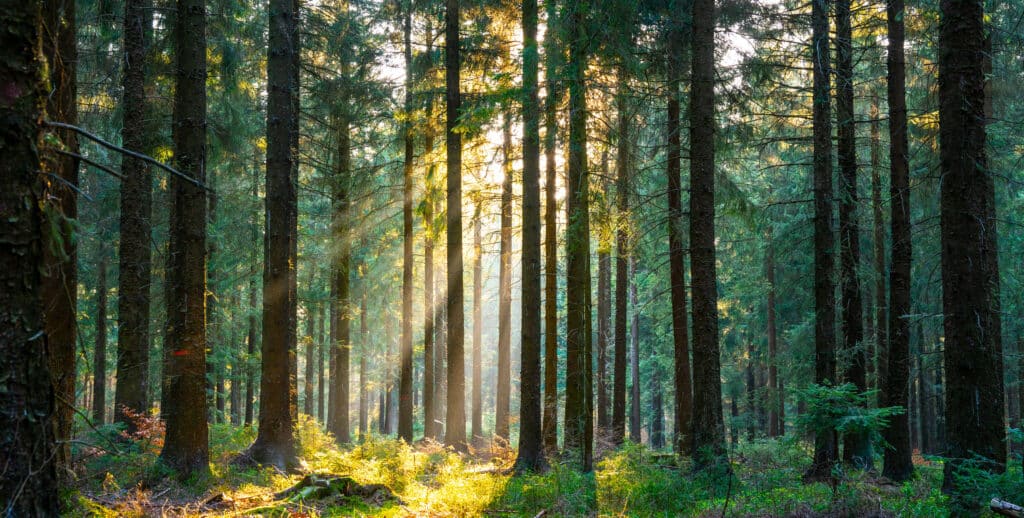In the face of the climate emergency, “nature-based solutions” represent a promising and relatively simple mitigation solution. Coined in 2008, this term refers to “actions to protect, sustainably manage and restore natural and modified ecosystems to effectively address societal challenges and provide benefits for humanity and biodiversity1.” These solutions aim to promote carbon storage in soils or biomass or to avoid emissions, for example by limiting deforestation. Their potential is still being debated, but estimates suggest that it could be possible to avoid the release of tens of billions of tonnes of CO2 into the atmosphere each year.
What role do nature-based solutions play in mitigating climate change?
Vincent Jassey. Nature-based solutions maximise CO2 storage in biomass or soil, among other things, by relying on natural biological processes. These ecosystems are being degraded by human activities and are losing their storage potential. For example, soils represent a significant carbon stock, estimated at around 2,500 billion tonnes, twice as much as in the atmosphere. However, deforestation and land use are reducing this capacity. The degradation of a carbon-rich environment such as a peat bog can release significant amounts of carbon, and restoration can take years. It is necessary to protect and restore ecosystems, as they are carbon sinks of great importance for our future.
What is the value of relying on nature-based solutions to mitigate climate change?
It is important to remember that a comprehensive approach is needed: combining energy efficiency with ecosystem preservation is essential to combat climate change. Nature-based solutions already exist and do not require new technologies. They cost nothing; we just need to let nature do the work. That, in my opinion, is their main advantage. Soils account for 25% of the storage potential of natural climate solutions, which totals 23.8 billion tonnes of CO2e per year [Editor’s note: global anthropogenic emissions will reach 53.8 billion tonnes of CO2e in 20232].

What’s more, preserving ecosystems protects biodiversity. Peatlands, for example, are home to unique plant and animal species and micro-organisms. Finally, these ecosystems have heritage value: peat cores are unique historical archives.
Nature-based solutions rely on three levers: protecting, restoring and sustainably managing ecosystems. Which is the most important?
We need to act on all three levers. In the Jura region, peatlands have been successfully restored. In urban areas, we are currently working on a project aimed at maximising carbon storage in the soil of an industrial wasteland. The soil is being amended with biochar and we are adding nitrogen-fixing plants with the aim of storing carbon and nitrogen in the soil. Restoration is essential but can take several years to be effective.
In the Northern Hemisphere, the conversion of peatlands to agricultural land released around 40 billion tonnes of carbon into the atmosphere between 1750 and 20103. This illustrates the importance of preserving these ecosystems to limit global warming. Finally, nature reserve managers carry out important sustainable management work that balances biodiversity conservation with recreational activities.
A selection of examples that work
A project led by Oxford University provides an interactive global map of best practices for nature-based solutions. It documents 150 examples from around the world, mainly involving interventions in food production and the restoration of degraded ecosystems. These include 62 cases aimed at mitigating climate change, such as national mangrove restoration and reforestation programmes and forest protection initiatives.
Are there any universal solutions that can be implemented worldwide?
No, because decisions must take into account the societal and geopolitical context. For example, in Canada, local stakeholders know that peatlands store carbon. But they also cover minerals, which poses a dilemma between conservation and exploitation. In France, peat has long been exploited for heating, making it an important part of the cultural heritage in some regions. Effective restoration can nevertheless be achieved while preserving traces of this heritage. However, there are many documented examples demonstrating the effectiveness of restoration methods.
According to Carbon Brief4, some people criticise the use of nature as a tool or reject the term “nature-based solutions” because of its vagueness, which they say opens the door to abuse. What is your opinion on this?
We must not forget that these are natural processes that already exist, have been serving us for thousands of years, and that all we need to do is stop damaging them further. There may be some abuses or obstacles. For example, some people are considering adding algae to the soil to maximise CO2 absorption. This needs to be carefully studied to avoid the introduction of invasive species, for example. Restoring ecosystems requires significant environmental expertise: these approaches are time-consuming and there is no immediate solution. In the short term, the priority remains reducing CO2 emissions, while nature-based solutions are a long-term strategy for combating climate change.








